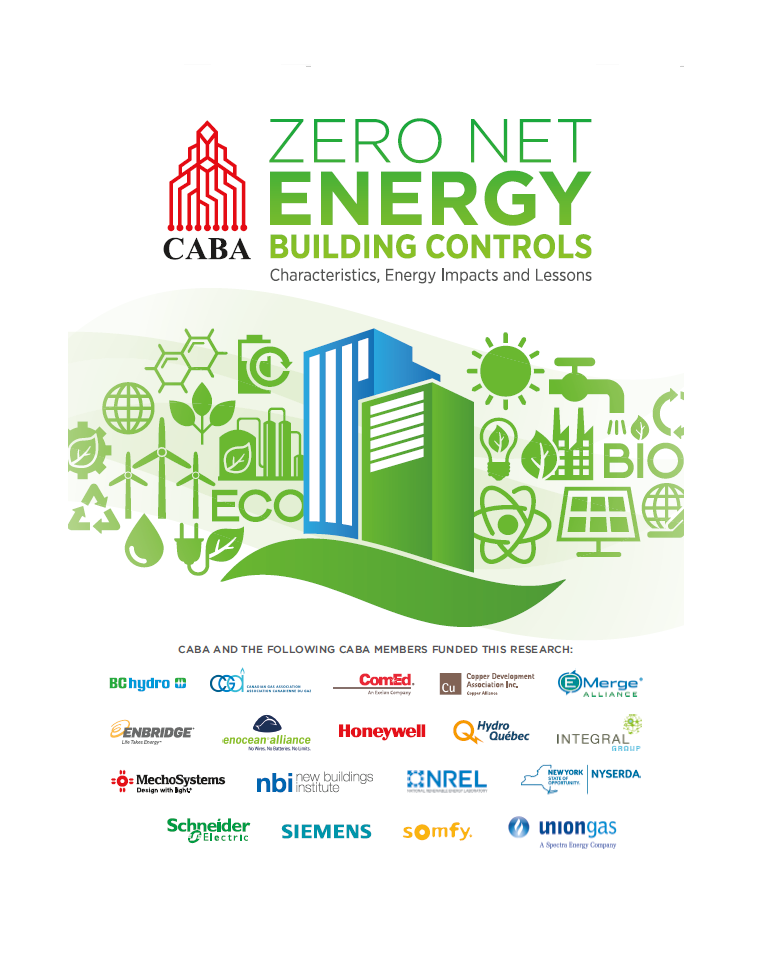Zero Net Energy Building Controls: Characteristics, Energy Impacts and Lessons Learned Research Report
Report / December 19, 2015 / Getting to Zero / Controls

This commercial building research project was conducted by New Buildings Institute and led by the Continental Automated of Buildings Association (CABA). The objective was to characterize monitoring and control systems in Zero Net Energy (ZNE) buildings focused on three key areas from the designer and user experience:
These key areas include:
- The Design, Selection and the System. What did they choose and why? What were the selection criteria, method, and the actual attributes of the control system installed at a set of ZNE buildings? What lessons can they share to increase good design integration and performance outcomes of controls?
- The Energy Impact. What energy performance are these ZNE buildings able to target and obtain? Can we identify savings attributed to various control systems or within the whole building energy use? How important to low energy targets were various systems in these buildings?
- The Use and User Experience. How are controls being operated, what is effective, and what is lacking? What are the perspectives and experience of the operators and occupants? What is needed for best outcomes in performance? What are the most desired and applied functions? What training/experience is needed to operate the controls?
In its examination of the design and system selection process, NBI heard from every project design firm interviewed that controls and early energy targets are critical to getting to ZNE. But, the study also found that most ZNE projects “have some controls problems.” The reasons were not based on any specific product, but rather on the process to “get it right” and installation issues. While some firms suggested simplifying processes and avoiding points of failure, the majority said system integration, extensive metering, automation, granular levels of data and feedback are “here to stay” and are “beneficial to the process.”
The study was conducted through interviews with design teams for 23 ZNE buildings, operators at six of those buildings, and 130 occupant surveys from seven of those buildings. The 23 buildings were all located in North America, representing six U.S. states and temperate Canadian provinces. Additionally, the buildings were located in the four ASHRAE climate (3, 4, 5 and 6) zones that contain the majority of the North American population. A majority of the buildings were office (13) and institutional-type (5) buildings. These buildings collectively have targets and outcomes with average energy use intensity (EUI) of just 22 kBtu per square foot per year.
Other key findings include:
- From both the design team and the operators’ perspective, the solutions lie in an increased need for the controls contractor and the building operator to be more actively engaged with the design early, during commissioning and after occupancy.
- These buildings are designed to energy-use levels 50% less than most new buildings today and over 75% less than the average existing buildings, with renewables making up the small balance of energy needs.
- The majority of design firms attributed HVAC, lighting and plugs each with having a greater than 15% impact on the energy savings, so the success of the control of these systems means the success of the energy goals.
- The role of occupants on energy outcomes has never been greater. Fully 74% of the buildings rely on the occupant for some part of the controls success, from roles with operable windows and blinds to plug load controls and energy awareness campaigns.
